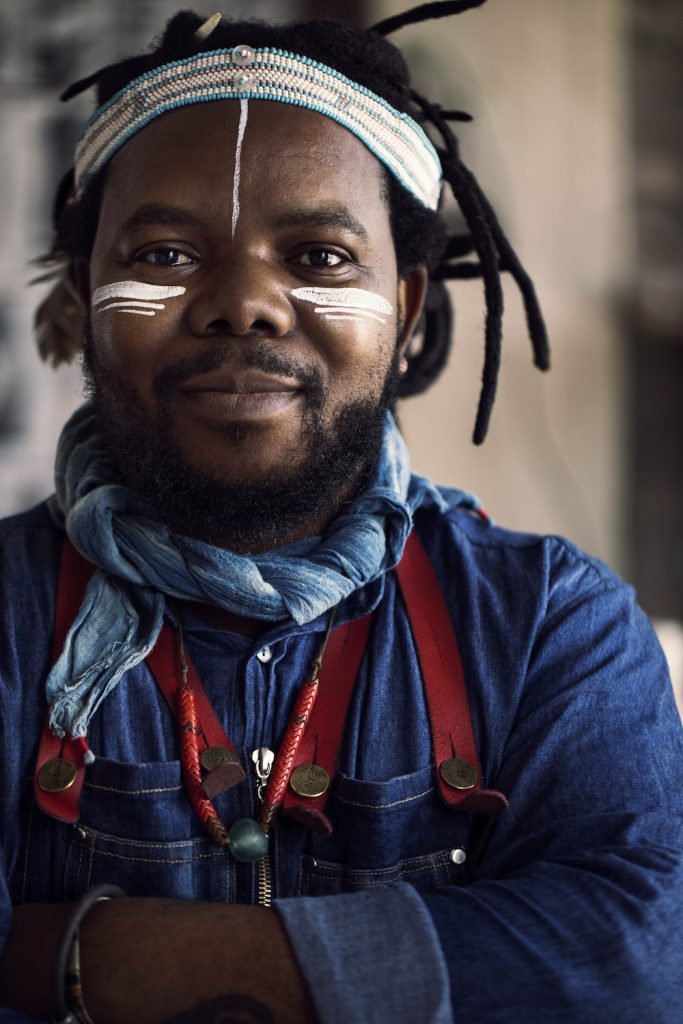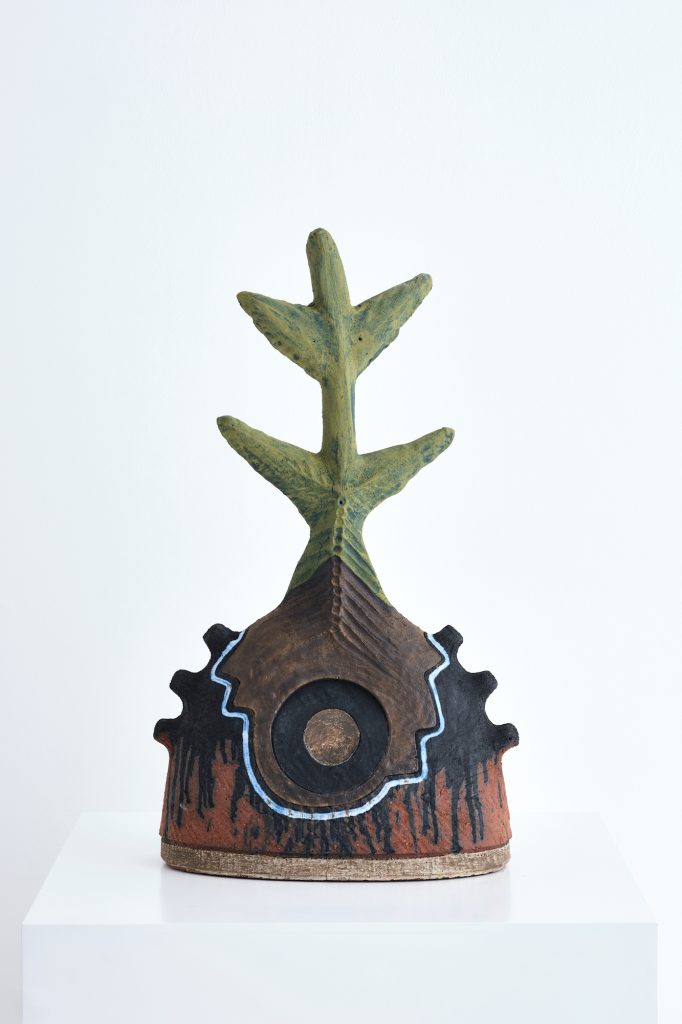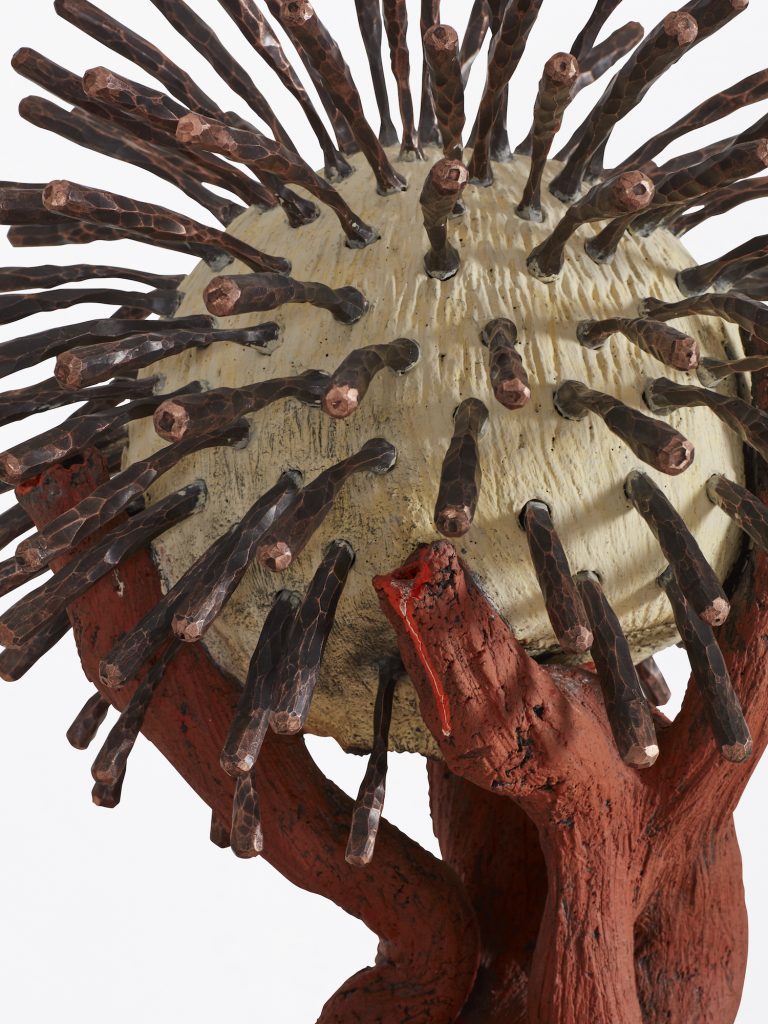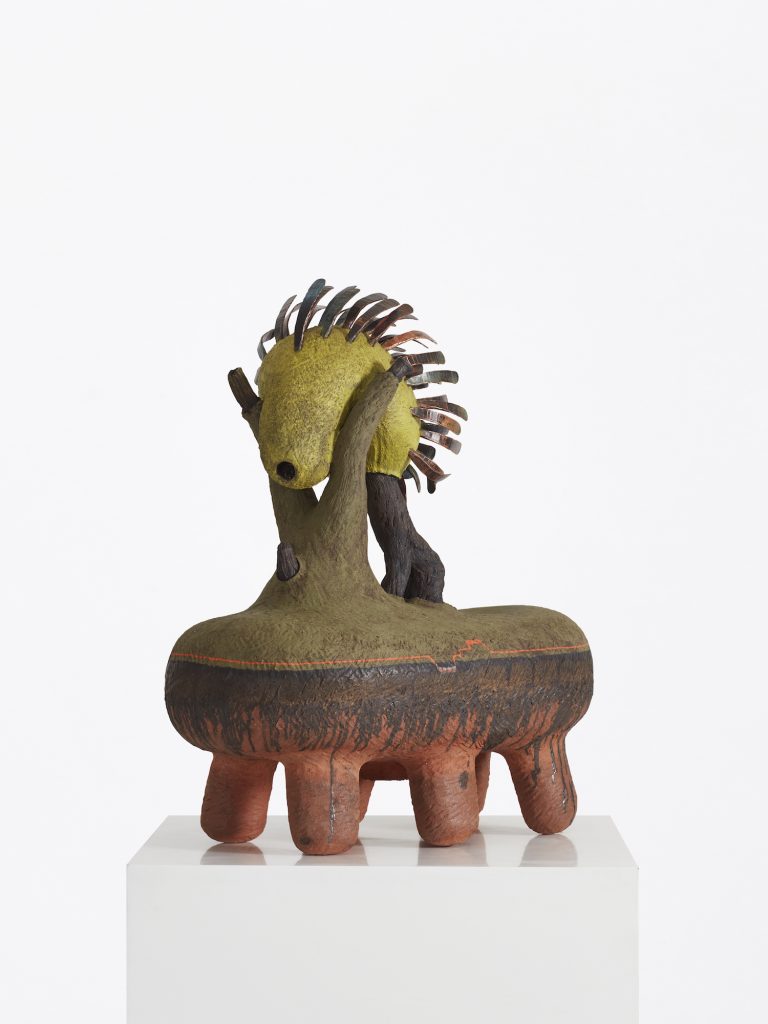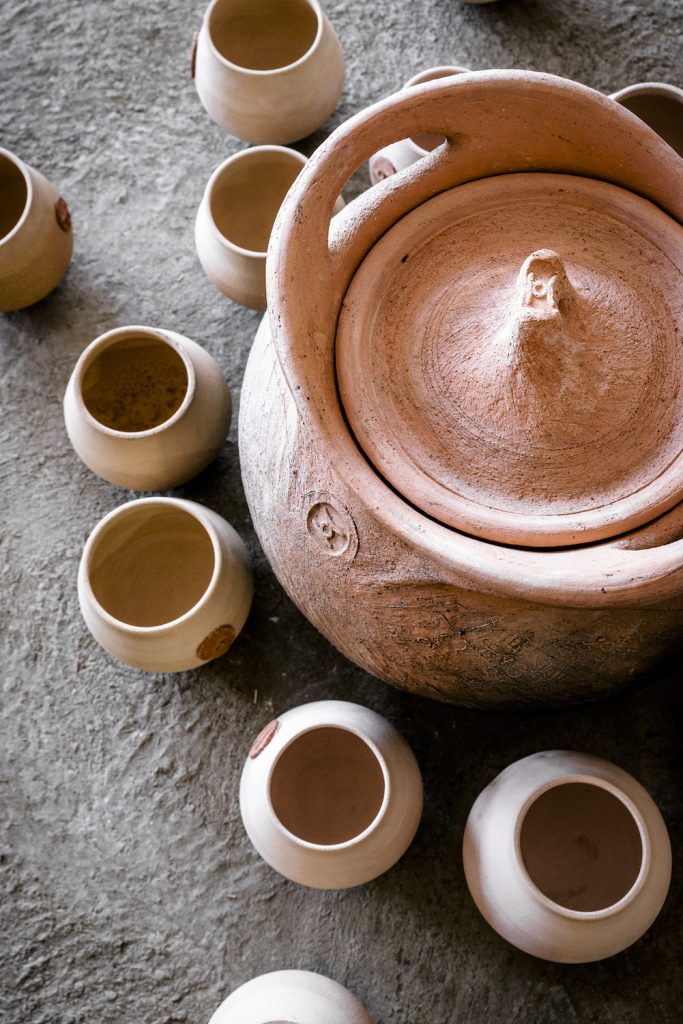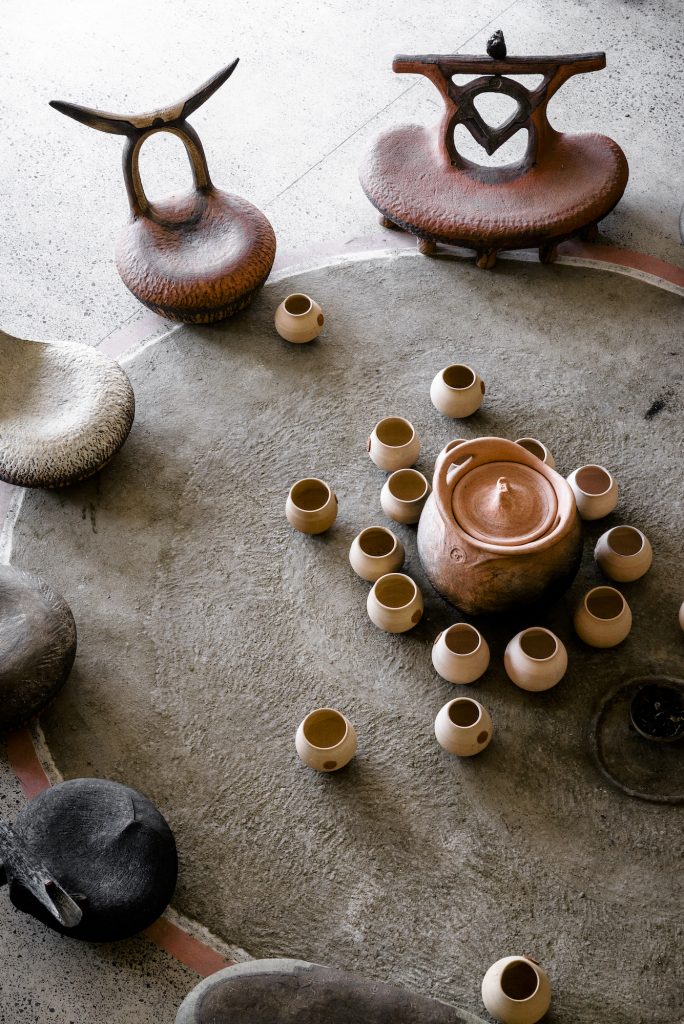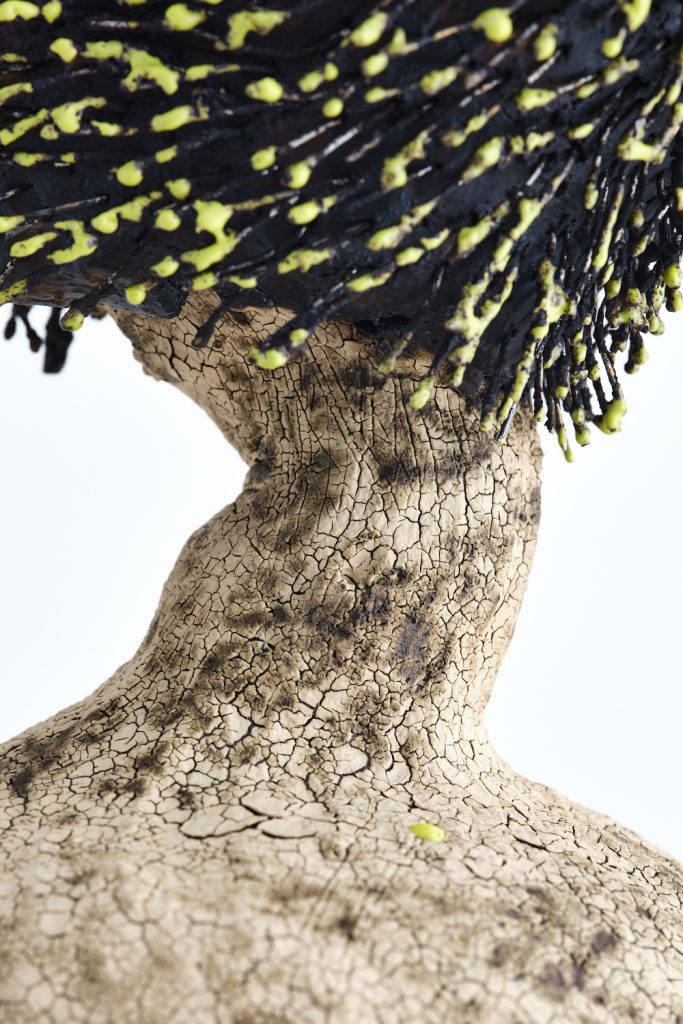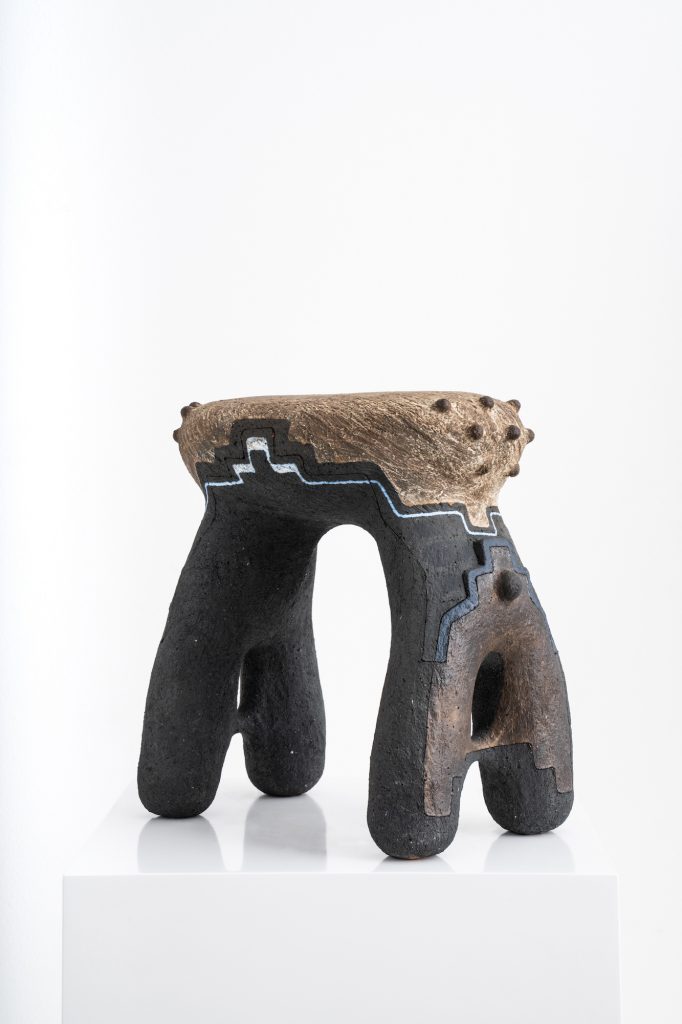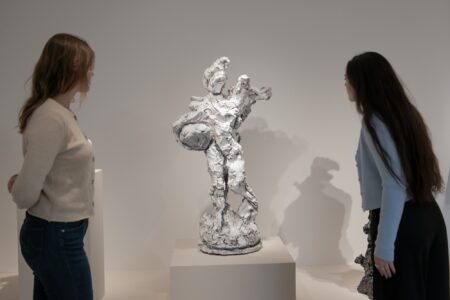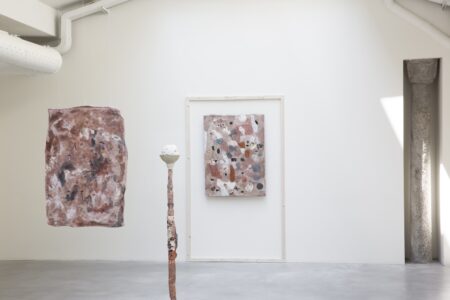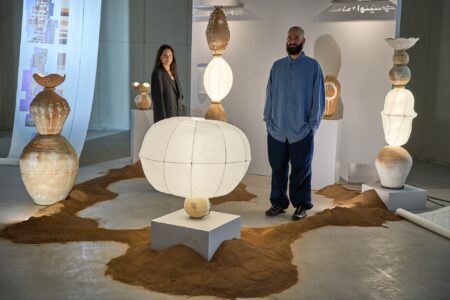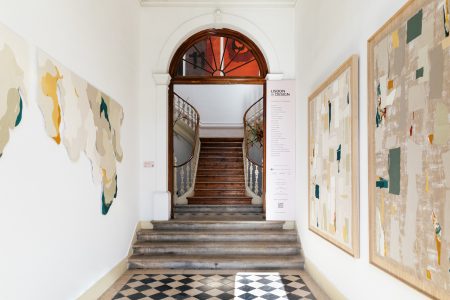Andile Dyalvane: The Ancestral Alphabet
On a trip to South Africa, Li Edelkoort had the opportunity to visit Andile Dyalvane in his studio and experience the process and ritual that goes into his making. She wrote about his work for our A/W 2022 issue: TLmag38: Origins.
At first, he strums his instrument, a simplified lute with a melodic, slightly melancholic and repetitive tune, reaching out to the ancestors. He welcomes them by burning fragrant grasses and painting his face with the colours of common purpose. His tribal tribute introduces his artist practice, paying respect to a long lineage of making. He was born and raised in his rural homestead in Ngobozana, situated in the Eastern Cape of South Africa, where as a child he indulged in playing with clay at the riverbanks. His young hands pounding the malleable soil predestined him to be called upon as an artist. Wherever there is soil, Andile can work and produce spiritual works that are connected to local earth. Whether he is an artist in residence in Denmark, France or Taiwan, the methods and outcomes are the same, attaching the earthenware objects to their direct environment, demonstrating the power of clay as in communicating vases. After becoming a master potter, he now has evolved his oeuvre to include master vessels, stools and characters.
To aid his primal expression and formulate his language, he first needed to design an alphabet of signs, as visual written tools and symbols in clay, to enable his writing on the wall. His coded language becomes embedded in the sphere and skin of each work, narrating the essence of animism as an ongoing belief system that considers all people, animals, trees, rivers and materials as sentient beings, made up of interconnective matter and containing revolving energies. The respect that filters through the way he treats his materials, handles his pigments and kneads his details, is palpable and demands respect from his collectors and curators. We are all in awe of the magnitude that is displayed.
The details explore environmental and cultural elements when he crafts his collection of eighteen sculptural stools, from domestic objects and botanical remedies to social roles and spiritual precepts, bringing together all aspects of rural village life. Bringing them together also in a physical sense, when they circle around each other in the inner square of his ancestral village, around a fire hearth intoxicated with herbal offerings. Here the collection called iThongo, meaning ancestral dreamscape, is offered to his Xhosa elders in a ceremony with great pomp and happiness, flying flags, beating drums, dancing steps. One major work is carefully carried across the valley and up the hills to the old village, which was destroyed during the Apartheid struggles in the 1950s. The seat will permanently shepherd and safeguard the ancestral burial grounds, since shepherd is its given name also. The dreamscape is a mental landscape through which messages are transmitted from the ancestors, it is therefore an energetic link between past, present and future. From there, laden with powers, the art works are transported to the other world, at the formidable Southern Guild gallery in Cape Town, then to be shipped overseas to become a show at the equally dedicated Friedman Benda gallery in Manhattan, connecting the two continents in a hopeful and considerate way. The art of Andile Dyalvane is born to be an agent of change and a tool for forgiveness, a ritual healer to bring our worlds closer.
@andiledyalvane
www. southernguild.co.za
@southernguild.co.za
@southernguildgallery
@imisoceramics.co.za
